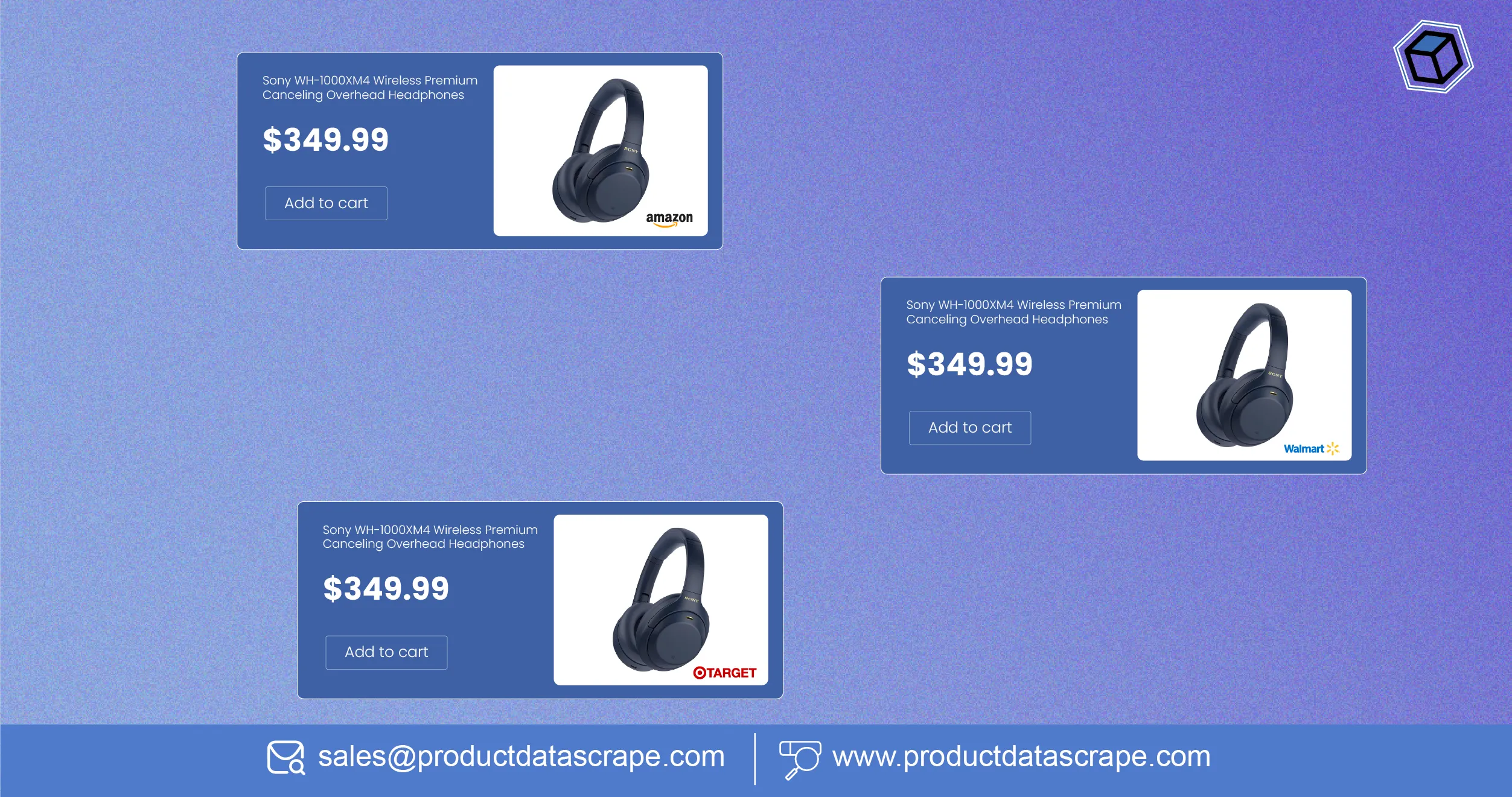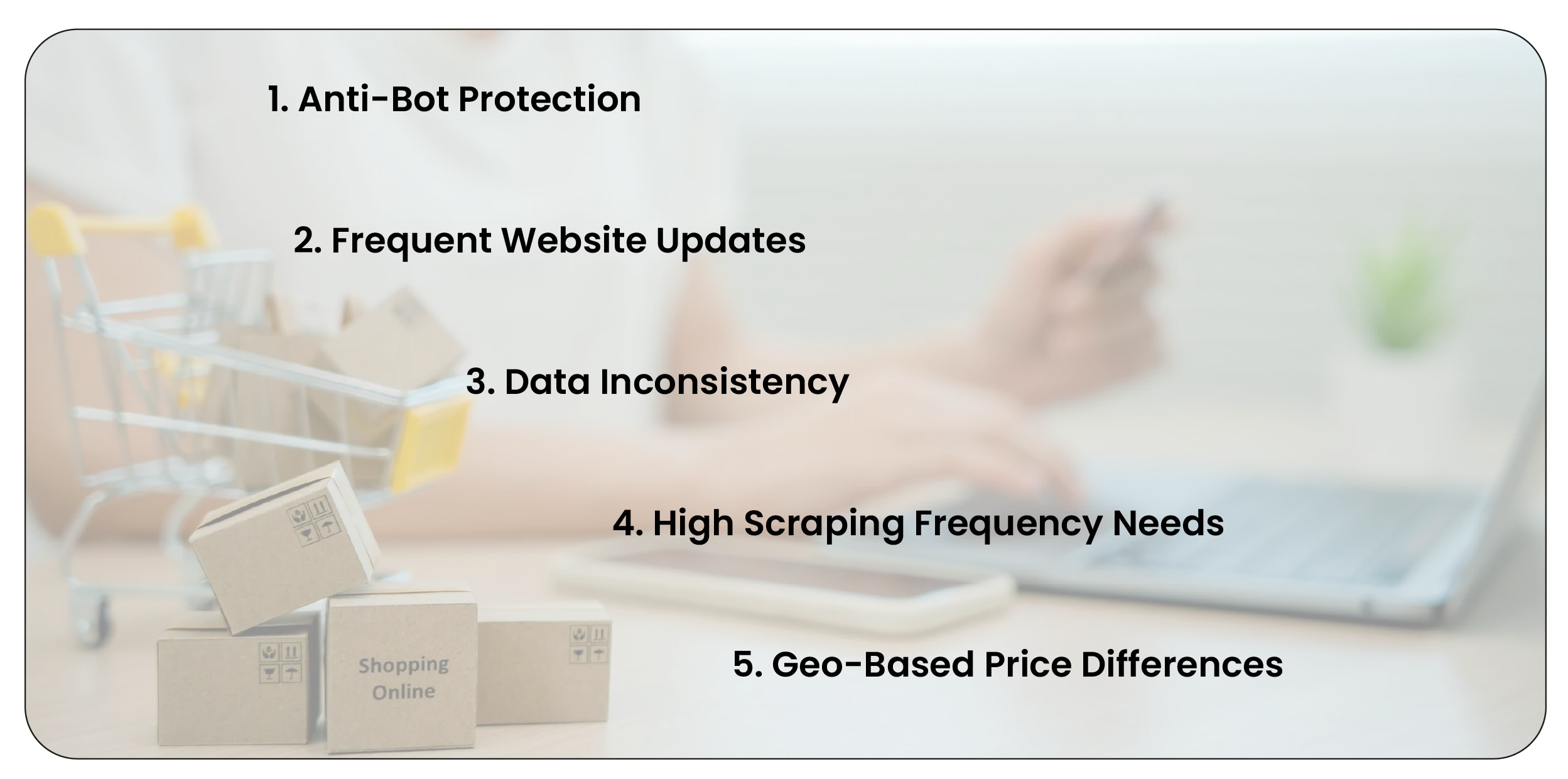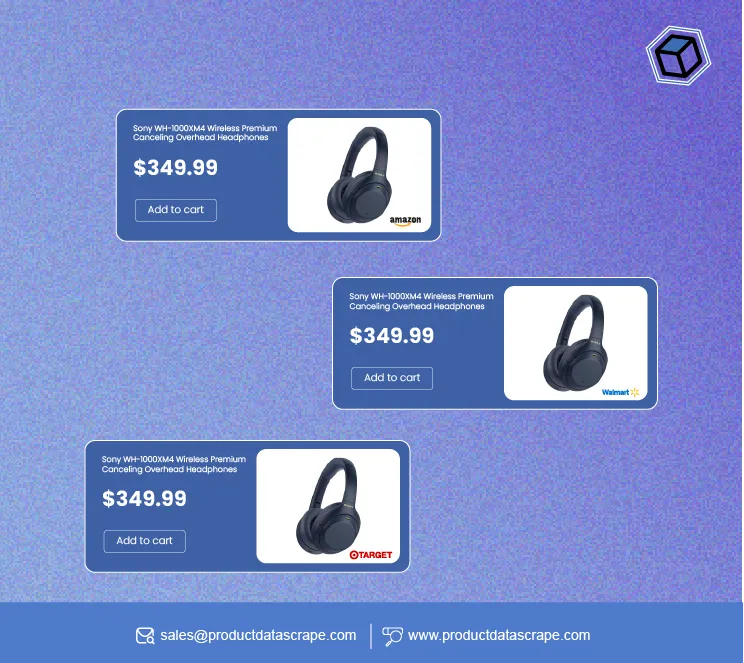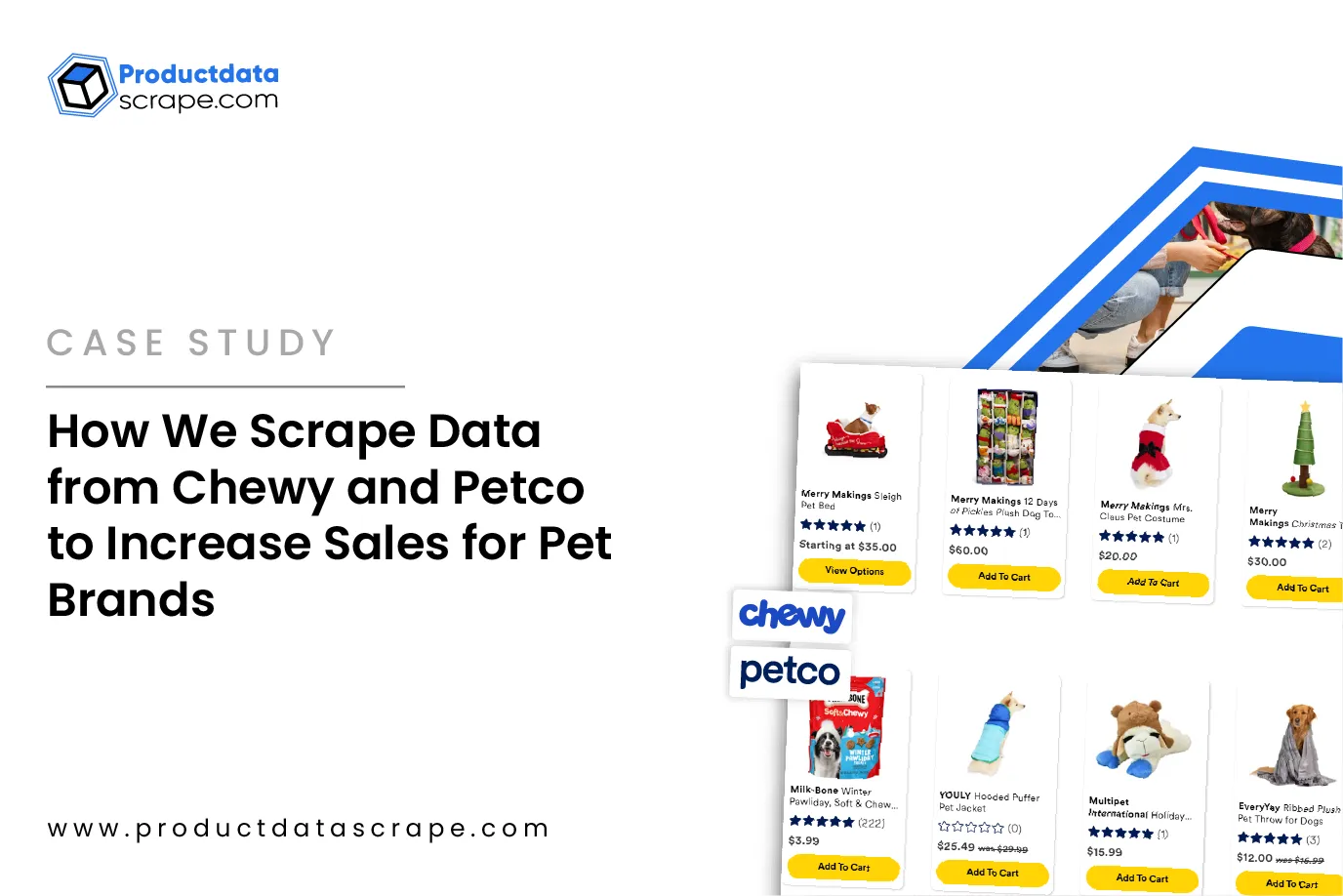
Introduction
Businesses today operate in a competitive digital environment where pricing decisions can influence market share, revenue, and customer loyalty. This is why companies increasingly rely on automated tools that help them Extract any eCommerce website for price matching and gain a deeper understanding of the pricing landscape. With thousands of retailers updating prices multiple times per day, manual monitoring is no longer feasible. Automation ensures accuracy, speed, and scalability.
Additionally, modern scraping tools make it easier to Scrape Data From Any Ecommerce Websites, ensuring brands always remain informed about competitors’ pricing behavior. By collecting structured pricing data, companies can optimize promotions, adjust their own pricing strategy, and respond quickly to market changes.
- Better Market Awareness: Businesses gain insights into competitor pricing, product trends, and discount cycles.
- Faster Decision-Making: Automated data collection supports instant price adjustments.
- Improved Profit Margins: Accurate data allows brands to balance competitive pricing with profitability.
- Operational Efficiency: Automation eliminates manual research and accelerates reporting.
When combined, these capabilities help brands maintain a winning edge in the evolving e-commerce marketplace.
Understanding How E-Commerce Price Scraping Works

Price scraping enables businesses to gather real-time pricing data across online marketplaces, brand sites, and retail stores. This process typically involves automated crawlers built specifically for Web scraping for price comparison, which extract relevant product details such as current price, previous price, discounts, stock status, and shipping fees.
How It Works:
- Target URL Identification: Businesses list all competitor pages, categories, or SKUs they want to monitor.
- Automated Crawling & Extraction: Bots scan product pages and extract structured data.
- Data Cleaning & Validation: The extracted data is normalized to maintain uniformity across multiple platforms.
- Insights & Price Intelligence: Clean data is visualized through dashboards or exported for analysis.
Price extraction is efficient, scalable, and crucial in fast-moving markets. With thousands of products online, automation ensures every price change is captured instantly, giving brands the ability to react faster than competitors.
This process is especially valuable for brands in electronics, fashion, FMCG, and grocery — categories known for rapid price fluctuations. Businesses benefit from reduced manual effort, improved accuracy, and accelerated decision-making.
Why Businesses Scrape Online Product Prices?

Companies scrape online product prices primarily to stay competitive in a market where pricing transparency influences customer buying behavior. Modern scraping systems support the need to collect Price Comparison Website Data Using Python, enabling instant access to market-wide pricing. When businesses also Scrape Data From Any Ecommerce Websites, they obtain complete visibility of competitor catalogs, product variations, and discount strategies.
Key Reasons Companies Scrape Prices
- Competitor Insights
Price scraping helps businesses monitor competitors' real-time pricing, stock updates, promotions, and discount patterns. This helps them adjust accordingly and remain competitive.
- Better Pricing Strategies
Companies can analyze historical and current price trends to determine optimal pricing for their products. This data-driven approach boosts conversions while protecting profit margins.
- Enhanced Promotion Planning
Businesses can understand seasonal discount patterns and launch promotions accordingly.
- Market Expansion Support
When entering new geographies or categories, companies can evaluate price trends and benchmark their catalog against competitors.
Overall, price scraping enables better decision-making, increased profitability, and data-backed operational strategies.
Key Advantages of Using E-Commerce Price Scraping
Businesses benefit significantly when the system extracts product prices from e-commerce websites, allowing them to stay ahead in a competitive market. Structured data also helps teams build a Custom eCommerce Dataset that supports strategic decision-making across sales, marketing, and operations
Major Advantages:
- Real-Time Competitor Benchmarking
Companies gain instant visibility into pricing changes. This helps adjust their own prices and avoid losing customers due to better competitor offers.
- Margin Optimization
With accurate competitor data, businesses can modify pricing to stay profitable and market-relevant. This is essential for industries with slim margins.
- Advanced Promotions & Forecasting
Price history helps teams predict discount cycles, plan campaigns, and target high-demand periods for maximum impact.
- Decision Support for Product Teams
By understanding pricing gaps across sellers, teams can determine which SKUs require repricing, bundling, or repositioning.
- Automated Reporting
Scraping reduces manual research, providing consistent, scalable, and error-free datasets.
Overall, price scraping streamlines operations, increases pricing intelligence, and enhances competitiveness.
Common Obstacles in Online Price Scraping

Scraping online prices at scale often presents technical and operational challenges. Many retailers adopt defensive mechanisms that require sophisticated tools like an Ecommerce Product Price API to gather consistent and uninterrupted data. Additionally, large-scale extraction often demands Product Matching Data Services to ensure accurate comparisons between similar or equivalent items.
Common Challenges:
- Anti-Bot Protection
Many websites use CAPTCHAs, dynamic rendering, and IP blocking. Scraping tools must mimic human behavior to avoid detection.
- Frequent Website Updates
E-commerce pages constantly change layouts, structures, or URLs. Scrapers need continuous maintenance to avoid failures.
- Data Inconsistency
Product titles, sizes, variants, and packaging differ across websites, causing mismatched results.
- High Scraping Frequency Needs
Markets like electronics or fashion change prices multiple times daily. High-frequency scraping requires scalable infrastructure.
- Geo-Based Price Differences
Prices vary across states, ZIP codes, and currencies, requiring geo-specific extraction capabilities.
Overcoming these obstacles involves advanced crawling technology, proxy rotation, automated error detection, and ongoing optimization.
How to Overcome E-Commerce Price Scraping Challenges?
The key to solving scraping challenges is using advanced tools and automation. When businesses choose the right tool is best for price matching scraping, they can monitor prices reliably and at scale. Tools powered by strong infrastructure and intelligent scripts ensure uninterrupted data flow. In addition, connecting the pipeline to a Web Data Intelligence API enhances accuracy, stability, and structured delivery.
Methods to Overcome Scraping Challenges:
- Use Residential & Rotating Proxies
This helps avoid IP blocks and bypass anti-bot detection systems, enabling continuous extraction.
- Use AI-Based Product Matching
AI helps match similar SKUs across retailers, fixing inconsistencies in product names, packaging sizes, and variants.
- Automate Monitoring & Alerts
Automation helps detect changes in website structure, preventing scraper failures.
- Build a Scalable Extraction Pipeline
Cloud-based scrapers handle high-frequency and high-volume extraction needs, supporting real-time pricing updates.
- Standardize Data into One Format
Normalization ensures pricing intelligence dashboards remain clean and easy to analyze.
With the right infrastructure, businesses gain continuous, accurate, and scalable pricing data intelligence.
Conclusion
In an increasingly competitive digital environment, businesses must monitor competitor prices, trends, and promotions to succeed. When companies Extract any eCommerce website for price matching, they gain vital intelligence that helps optimize pricing, improve promotions, and enhance profitability. Automated extraction supports fast decision-making and reduces manual workload.
Using modern scraping techniques, companies can remain agile, adjust strategies quickly, and stay aligned with evolving market conditions. Scalable tools, dashboards, and automated workflows make pricing intelligence accessible even for large catalogs. These systems ensure accurate, real-time visibility into the pricing landscape and help teams identify opportunities faster than ever.
With reliable, automated, and scalable solutions, businesses can fully leverage competitive intelligence to drive growth, improve margins, and strengthen their market positioning. Partner with Product Data Scrape today and unlock precise, real-time pricing intelligence that keeps your business ahead of every competitor!
FAQs
Why is price scraping important for e-commerce businesses?
Price scraping helps businesses stay competitive by tracking real-time price changes across multiple online retailers. It allows companies to understand competitor strategies, optimize their own pricing, plan promotions effectively, and ensure customers always receive the best value. Without automated scraping, manual monitoring becomes slow, inaccurate, and unsustainable at scale.
Is it legal to extract product prices from eCommerce websites?
Price scraping is generally legal when done responsibly—public data can be collected as long as the process respects website terms, avoids personal data, and does not harm server performance. Businesses often use ethical scraping practices, rate limits, and compliance frameworks to ensure secure, transparent, and lawful data extraction operations.
How often should businesses monitor competitor pricing?
Brands should monitor competitor pricing daily or even multiple times per day during high-traffic periods like Black Friday or festive sales. Since prices change frequently online, real-time or scheduled scraping ensures organizations never miss crucial shifts, helping them maintain competitive pricing, protect revenue, and react quickly to new market trends.
What tools are used for e-commerce price scraping?
Businesses commonly use automated crawlers, web scraping APIs, headless browsers, and AI-based product matching systems. These tools collect pricing, availability, discounts, and product variations at scale. Many companies also rely on custom-built pipelines that clean, match, and structure scraped data for dashboards, analytics, and dynamic pricing engines.
Can price scraping help improve marketing and promotions?
Yes. Price scraping reveals when competitors launch discounts, run flash sales, or adjust pricing before major events. This insight helps businesses plan more effective promotions, allocate marketing budgets strategically, and match or outperform competitor offers. With accurate competitive intelligence, brands maximize conversion rates and reduce guesswork in campaign planning.






.webp)











.webp)
-01.webp)

.webp)
.webp)
.webp)